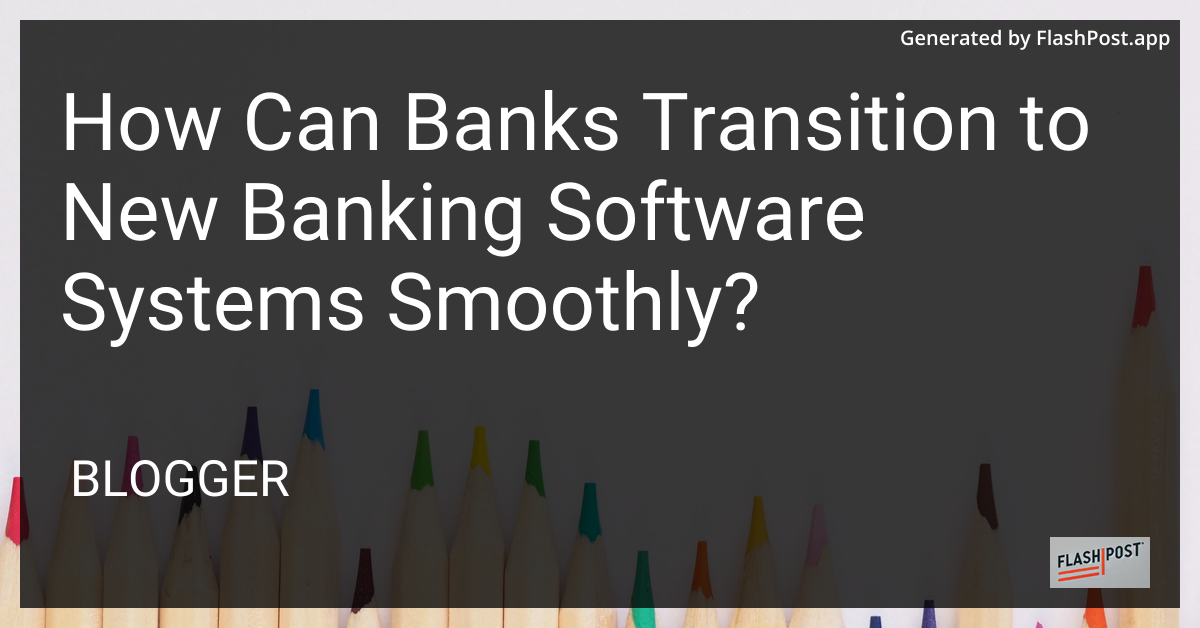How Can Banks Transition to New Banking Software Systems Smoothly?

How Can Banks Transition to New Banking Software Systems Smoothly?
In today’s rapidly evolving financial landscape, banks are increasingly seeking to upgrade their software systems to maintain a competitive edge and improve customer service. Transitioning to new banking software, however, can be challenging. The process requires careful planning, coordination, and execution to avoid disruptions. Here are several strategies banks can employ to ensure a smooth transition.
1. Comprehensive Planning and Training
The foundation of any successful transition is comprehensive planning. Banks must conduct thorough assessments of their current systems and identify their specific needs. Establishing clear objectives and timelines is crucial to guide the transition process.
Furthermore, investing in employee training is critical. Staff must be well-trained to handle new systems proficiently. This can be achieved through workshops, seminars, and hands-on training sessions, which will minimize resistance and errors.
2. Choosing the Right Technology Partner
Selecting a reliable technology partner is essential. Banks should evaluate potential software vendors based on their track record, support services, and the scalability of their solutions. Collaborating with vendors who have prior experience with financial institutions can prove invaluable.
3. Implementing Data Migration and Testing Protocols
An often overlooked but crucial component is effective data migration. Ensuring data integrity during the transition is non-negotiable; thus, banks must conduct rigorous testing and validation processes to confirm data is accurately migrated.
Comprehensive testing protocols should also be implemented to assess system functionality, security, and performance. Banks should perform parallel runs to compare results from old and new systems and fine-tune any discrepancies.
4. Customer Communication and Support
Keeping customers informed is vital to avoid frustration and maintain trust. Clear and consistent communication strategies should be developed to guide customers through the transition, including FAQs, step-by-step guides, and support hotlines.
Additionally, offering dedicated customer support during the transition phase can alleviate any concerns and ensure a seamless customer experience.
5. Continuous Monitoring and Evaluation
Post-transition, continuous monitoring and evaluation are imperative. This involves tracking system performance, addressing issues promptly, and soliciting feedback from employees and customers to make ongoing improvements.
Navigating a software transition requires meticulous preparation and execution, but with the right strategies in place, banks can transform their operations successfully. By investing in planning, training, and collaboration with an experienced technology partner, banks can enhance their systems with minimal disruption, offering improved services to their clientele.
For more financial insights, explore topics such as how to obtain a payday loan without a bank account, analyzing the impact of central bank policies, and understanding bankruptcy and installment loans.
Comments
Post a Comment